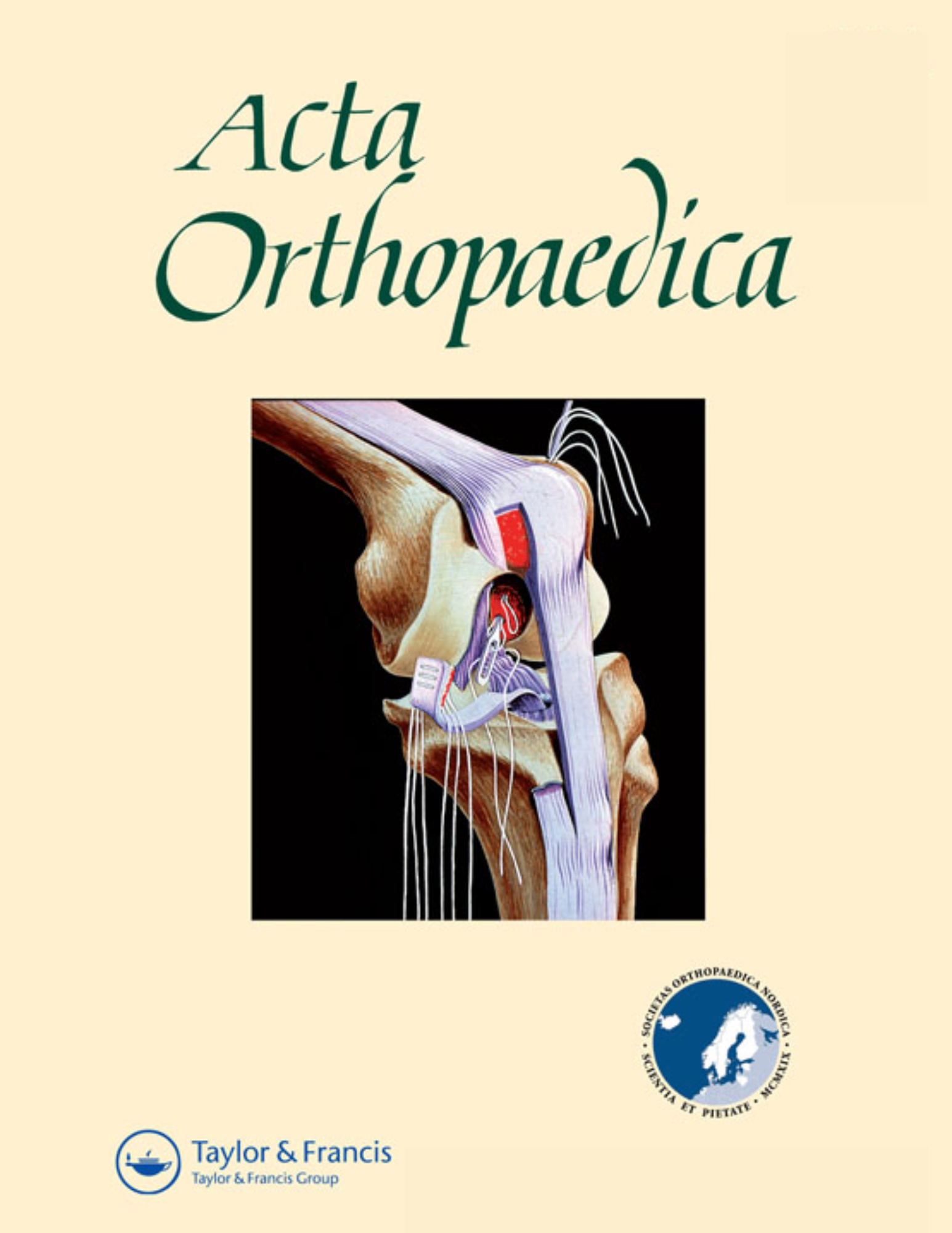
Improved outcomes with infiltration and intraarticular injection following THA

Improved outcomes with infiltration and intraarticular injection following THA
Reduced hospital stay and narcotic consumption, and improved mobilization with local and intraarticular infiltration after hip arthroplasty: A randomized clinical trial of an intraarticular technique versus epidural infusion in 80 patients
Acta Orthop. 2007 Apr;78(2):180-6Did you know you're eligible to earn 0.5 CME credits for reading this report? Click Here
Synopsis
80 patients with osteoarthritis undergoing total hip replacement surgery were randomized to receive a combination of infiltration with either a single intraarticular injection, or epidural infusion, to compare pain relief in individuals post-surgery. The findings indicated that infiltration with one intraarticular injection resulted in multiple benefits, including improved pain relief, reduced narcotic consumption, decreased occurrence of side effects, improved walking ability, as well as decreased time of hospital stay.
Was the allocation sequence adequately generated?
Was allocation adequately concealed?
Blinding Treatment Providers: Was knowledge of the allocated interventions adequately prevented?
Blinding Outcome Assessors: Was knowledge of the allocated interventions adequately prevented?
Blinding Patients: Was knowledge of the allocated interventions adequately prevented?
Was loss to follow-up (missing outcome data) infrequent?
Are reports of the study free of suggestion of selective outcome reporting?
Were outcomes objective, patient-important and assessed in a manner to limit bias (ie. duplicate assessors, Independent assessors)?
Was the sample size sufficiently large to assure a balance of prognosis and sufficiently large number of outcome events?
Was investigator expertise/experience with both treatment and control techniques likely the same (ie.were criteria for surgeon participation/expertise provided)?
Yes = 1
Uncertain = 0.5
Not Relevant = 0
No = 0
The Reporting Criteria Assessment evaluates the transparency with which authors report the methodological and trial characteristics of the trial within the publication. The assessment is divided into five categories which are presented below.
2/4
Randomization
2/4
Outcome Measurements
4/4
Inclusion / Exclusion
4/4
Therapy Description
4/4
Statistics
Detsky AS, Naylor CD, O'Rourke K, McGeer AJ, L'Abbé KA. J Clin Epidemiol. 1992;45:255-65
The Fragility Index is a tool that aids in the interpretation of significant findings, providing a measure of strength for a result. The Fragility Index represents the number of consecutive events that need to be added to a dichotomous outcome to make the finding no longer significant. A small number represents a weaker finding and a large number represents a stronger finding.
Why was this study needed now?
Following total hip replacements, post-operative relief can be provided through a variety of methods, some of which include intravenous analgesia, epidural analgesia, and peripheral nerve block techniques. With the goal of reducing the occurrence of side effects while still maintaining sufficient pain relief, the combination of local infiltration and single-shot injections has been introduced. Infiltration combined with a single-shot intraarticular injection in the hip joint has not been compared with epidural infusion. Therefore, this study was needed to investigate the effects of this combined technique on analgesia in patients undergoing a total hip replacement.
What was the principal research question?
Does the use of infiltration combined with a single-shot intraarticular injection result in increased analgesia and improved overall patient outcome postoperatively, as compared to epidural infusion, in patients undergoing a total hip replacement?
What were the important findings?
- Pain scores measured by VAS from 2 to 20 hours postoperative were similar between the two groups (p=0.2). However, pain scores in group A were significantly lower compared to group E in the 24-28 hour period (8 [IQR 12-33.5] vs. 20 [3.5-39]; p=0.02) and the 52-96 hour period (0 [IQR 0-0] vs. 11 [5.5-24]; p<0.001).
- During the first 20 hours patients in group A had reduced narcotic consumption compared to group E (17.4 mg [IQR 0-40.5] vs. 26 mg [IQR 21-52]; p=0.004). Total consumption over the 96 hour period was also significantly lower in group A vs group E (258 [IQR 167–366] vs. 324 [IQR 221–543]; p=0.05).
- Eight hours after surgery, walking ability was improved in group A in comparison to group E (33/38 vs. 13/37; p<0.001). Bromage scores also favoured group A over group E (p<0.001).
- Group A had a reduced length of hospital stay compared to Group E; 4.5 (IQR 3-6) and 7 (IQR 5.5-7), respectively (p<0.001).
- With the exception of nausea (p=0.1), group A had lower recurrence of vomiting (p=0.05), urinary retention (p=0.001), itch (p=0.01), and constipation (p<0.001). Additionally, 1 patient in each group developed deep vein thrombosis.
What should I remember most?
Patients who received the combination of wound infiltration and one intraarticular injection following total hip replacement, had reduced narcotic consumption, decreased occurrence of side effects, shorter length of stay in hospital, as well as improved walking ability, when compared to continuous epidural infusion.
How will this affect the care of my patients?
The results of this study indicated that the combination of wound infiltration with a single intraarticular injection provides numerous benefits to patients undergoing total hip arthroplasty. It is important to note that no conclusions were made regarding the risk for deep infection with this technique. Additional studies are needed to confirm these results.
Learn about our AI Driven
High Impact Search Feature
Our AI driven High Impact metric calculates the impact an article will have by considering both the publishing journal and the content of the article itself. Built using the latest advances in natural language processing, OE High Impact predicts an article’s future number of citations better than impact factor alone.
Continue



 LOGIN
LOGIN

Join the Conversation
Please Login or Join to leave comments.